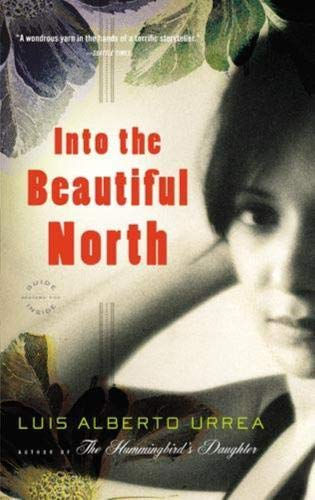Book Club Discussion Questions: Into the Beautiful North by Luis Albert Urrea
- Elise

- Aug 17, 2021
- 3 min read
Updated: Mar 23, 2022
For those of you that haven't or couldn't attend book club lately, we'll be publishing the previous months' discussion questions here. I hope eventually to post discussion questions for all of the books we've covered since I took over a couple of years ago and beyond, all the way to the beginning over a decade and a half ago. It will take a while. Until then, we will be posting discussion questions on a weekly basis. Here are the questions from a 2015 title, Into the Beautiful North. We hope these questions spark discussions of your own.

Into the Beautiful North
by Author
Summary:
Nineteen-year-old Nayeli works at a taco shop in her Mexican village and dreams about her father, who journeyed to the US to find work. Recently, it has dawned on her that he isn't the only man who has left town. In fact, there are almost no men in the village -- they've all gone north. While watching The Magnificent Seven, Nayeli decides to go north herself and recruit seven men -- her own “Siete Magnificos” -- to repopulate her hometown and protect it from the bandidos who plan on taking it over.
Filled with unforgettable characters and prose as radiant as the Sinaloan sun, Into the Beautiful North is the story of an irresistible young woman's quest to find herself on both sides of the fence.
Discussion Questions
Into the Beautiful North tells the exceptional story of a small group’s successful mission to save their village in its bleakest hour. What are some of the other themes that Luis Alberto Urrea unpacks along the way?
Language and dialect play an integral role in the novel’s style. Spanish words and phonetic spellings are laced throughout, and Spanglish and slang are used on both sides of the border. What does Urrea achieve by mixing language in this way? What does it say about the ability of language to bridge --- or not to bridge --- cultural gaps?
Into the Beautiful North is divided into two parts—Sur and Norte. References to American pop culture abound in the first half as Nayeli and her friends speak of life across the border with unwavering certainty. Where do their ideas of America come from? How does the reality of their time in the U.S. compare to their initial ideas of it? Are they surprised or disappointed?
Nayeli tells García-García, “Perhaps it is time for a new kind of femininity?” What does she mean? Given the homage to The Magnificent Seven and Seven Samurai in the novel, how has Urrea played with gender stereotypes?
Into the Beautiful North examines physical and psychological borders. Urrea repeatedly shows that while the physical borders can be crossed, some that are culturally defined appear unbridgeable. What are those culturally defined differences, and do you think it’s possible to eradicate such invisible borders?
After traveling thousands of miles in search of her father, Nayeli is unable to confront him. In your opinion, does she make the right decision to heed his words at this time—“all things must pass”—or should she have approached him?
What do you make of the overwhelming turnout produced by Aunt Irma’s interviews? Why do so many men want to return to Mexico, and does this strike you as ironic?
Nayeli and her friends are inspired by the movie The Magnificent Seven, a remake of the Japanese film Seven Samurai. Both films climax with the showdown between good guys and bad guys, but Urrea ends his novel before such a clash. Why do you think he did so?
Were you surprised to find the Mexican characters so knowledgeable about American pop culture? If you were surprised, did it change how you think about Mexico?
Where did your family emigrate from? Did you recognize any parallels between your family stories and this one?









Comments